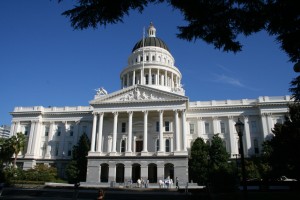By Scott Detrow

The Brown Administration has laid out two options for expanding Medi-Cal, California's health insurance program for the poor, and county governments don’t seem to like either one.
For decades, California’s counties have been charged with providing health care for people who fall through the health insurance cracks – that is, adults who earn too much money to be eligible for Medi-Cal coverage, but still can’t afford to buy insurance. So county governments have a lot at stake as California decides how to pay for the federal health care overhaul's Medicaid expansion.
Some context: the Affordable Care Act initially required states to expand their Medicaid rolls so that people who earn up to 138 percent of the federal poverty line (about $15,000) could qualify for coverage. The United States Supreme Court struck down the requirement, leaving it up to states to decide whether or not they wanted to expand Medicaid.
The Brown Administration supports expanding Medi-Cal, and has laid out two different options for doing so. Option one essentially expands the existing Medi-Cal system. Option two puts each of California's 58 counties in charge of the new coverage. That means counties, not the state, would have to pay for additional insurance costs once the federal government stops footing 100 percent of the bill in 2017.